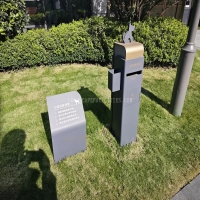Welcome to the website for landscape facilities products and knowledge.
How does the table’s design accommodate the use of negotiation or bargaining tools?
In contemporary professional environments, table design has evolved beyond mere functionality to become a strategic element in negotiation dynamics. Modern negotiation tables incorporate specialized features that actively facilitate the use of bargaining tools and enhance collaborative processes. The integration begins with surface considerations - tables now frequently include built-in power outlets, USB ports, and wireless charging capabilities to support digital negotiation aids. These technological integrations ensure that devices remain operational throughout lengthy bargaining sessions.
The physical architecture of negotiation tables significantly impacts tool utilization. Many designs feature modular components that can be reconfigured based on negotiation style - from competitive positioning to collaborative problem-solving setups. Tables with rotating central sections allow for seamless document sharing, while strategically placed monitor mounts enable visual aid presentations without disrupting eye contact among participants. The inclusion of discreet drawers and compartments provides organized storage for physical negotiation tools, from printed materials to traditional bargaining instruments.
Material selection plays a crucial role in accommodating negotiation tools. Non-reflective surfaces prevent glare from digital devices, while sound-absorbing materials maintain confidentiality. The strategic incorporation of whiteboard surfaces directly into table tops enables real-time visualization of proposals and counteroffers. Height-adjustable mechanisms allow participants to alternate between seated discussions and standing negotiations, accommodating different bargaining styles and physical needs throughout extended sessions.
Ergonomics significantly influence negotiation effectiveness through table design. Curved edges and rounded corners create psychologically safer environments, while strategic dividers can provide privacy for side conversations without requiring participants to leave the table. The careful consideration of sightlines ensures all participants have equal visual access to presented materials and tools, preventing positional advantages. Advanced designs even incorporate biometric sensors to monitor engagement levels, providing valuable data for optimizing negotiation strategies.
The most innovative tables now feature integrated technology suites specifically designed for bargaining scenarios. These include built-in voting systems, real-time translation services, and digital recording capabilities that capture agreements as they form. The table itself becomes an active participant in the negotiation process, with smart surfaces that can display relevant data visualizations and historical context at crucial decision points. This technological integration transforms the table from a passive platform into an interactive negotiation partner.
Ultimately, the modern negotiation table represents a sophisticated ecosystem where physical design and digital capabilities converge to support complex bargaining processes. By anticipating the needs of negotiators and incorporating tools directly into the furniture architecture, these designs reduce friction in the negotiation process and create environments where agreements can be reached more efficiently and effectively. The table becomes not just a piece of furniture, but a comprehensive negotiation support system that adapts to the evolving demands of modern business diplomacy.
Related search:

Recommendation
Outdoor cat and dog feces trash can; Community pet trash can; Metal multi-color design